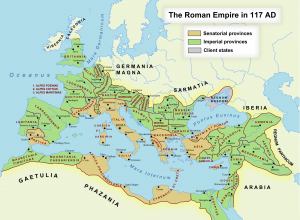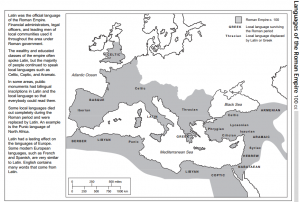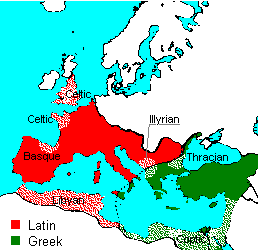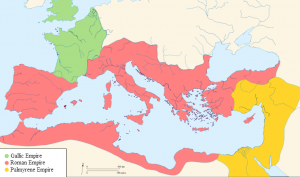This gorgeous map of the Roman Empire at the end of Trajan’s reign is in the public domain.
The document below shows the languages of the Roman Empire around the same time. (Note the legend; “displaced” means that it no longer survived by the time of the dissolution of the western Roman Empire. That Celtic patch in Asia Minor is Galatian, as Jerome attests that the Gallic tongue was spoken in both regions in his day. The map shown below may not be completely accurate.)
The map below attempts to illustrate the dominant areas of Latin and of Greek in the Roman Empire under Trajan. It also may not be completely accurate and doesn’t do much to illustrate the spread of Aramaic (which later becomes the Syriac language) through the near east.
Languages other than Latin and Greek were considered barbarous tongues by the Romans, but a Roman education included knowledge of Greek as well as Latin. Trilingualism was common among those who were educated; a native tongue, Greek, and Latin. Augustine, who know Greek and Latin also, said that his Punic helped him understand Hebrew. Lucian from Samosata, a town on the Euphrates river, writes in Greek but refers to himself as a “Syrian” and a “barbarian.”
Zenobia, queen of the short-lived Palmyrene Empire in the third century AD, was fluent in Greek and Aramaic (the language that became Syriac), with knowledge of Latin and Egyptian (the language that became Coptic). All of these languages would have been practical for conducting affairs in her territory.
The next time you read someone try to pin a document in Syria because of semitic-language influences on the Greek text, or because the original is in Syriac, perhaps these maps will help make that kind of argument more transparent.
Some interesting pages:



